The Ultimate Guide to Dirt Bike Boots

Motocross boots are without doubt the second most important piece of safety equipment in your gear bag (the first being your helmet of course). Choosing the right or wrong boots can have a big impact on your riding and injury prevention.
We recommend that quite a large chunk of your gear budget be spent on a decent set of dirt bike boots, as equipping yourself with the best motocross boots possible will keep you as safe as possible on the track and trail.
Why are dirt bike boots important?
Motocross boots are one of the most important pieces of protective equipment that we need to be wearing off-road out on the tracks and trails. Whether you race competitively or simply ride for fun with your friends, a good quality set of boots are needed to protect your lower leg, ankle joint, toe cap and feet. Motocross, enduro, flat track, trials and dual sport riders all benefit from a decent set of boots on their footpegs.
There are always motorcycle boots to fit your style, calf sizes, and budget, from an entry-level boot with basic ankle protection through to the high-end impact protection of the top of the line range. A solid set of boots are an investment in your safety and well being.
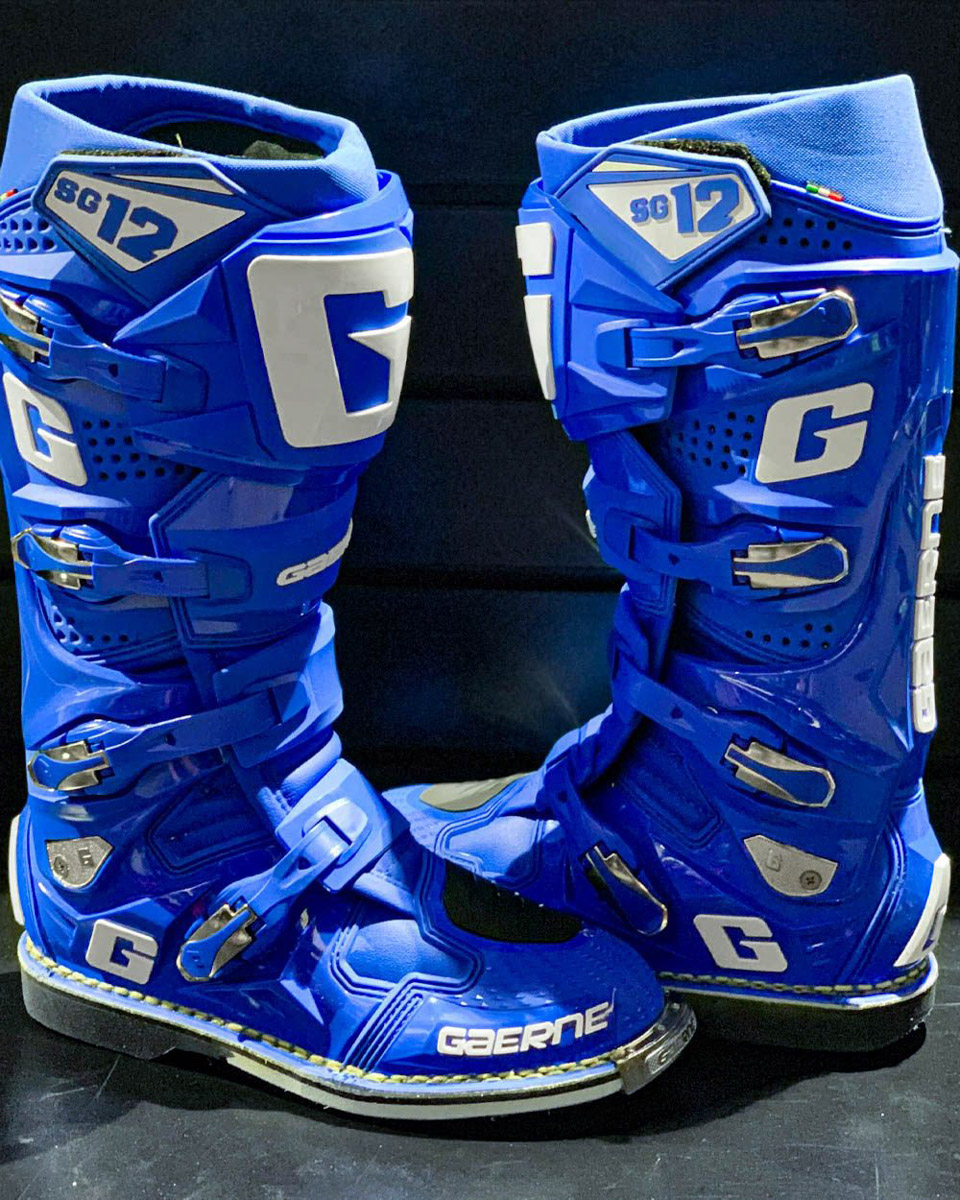
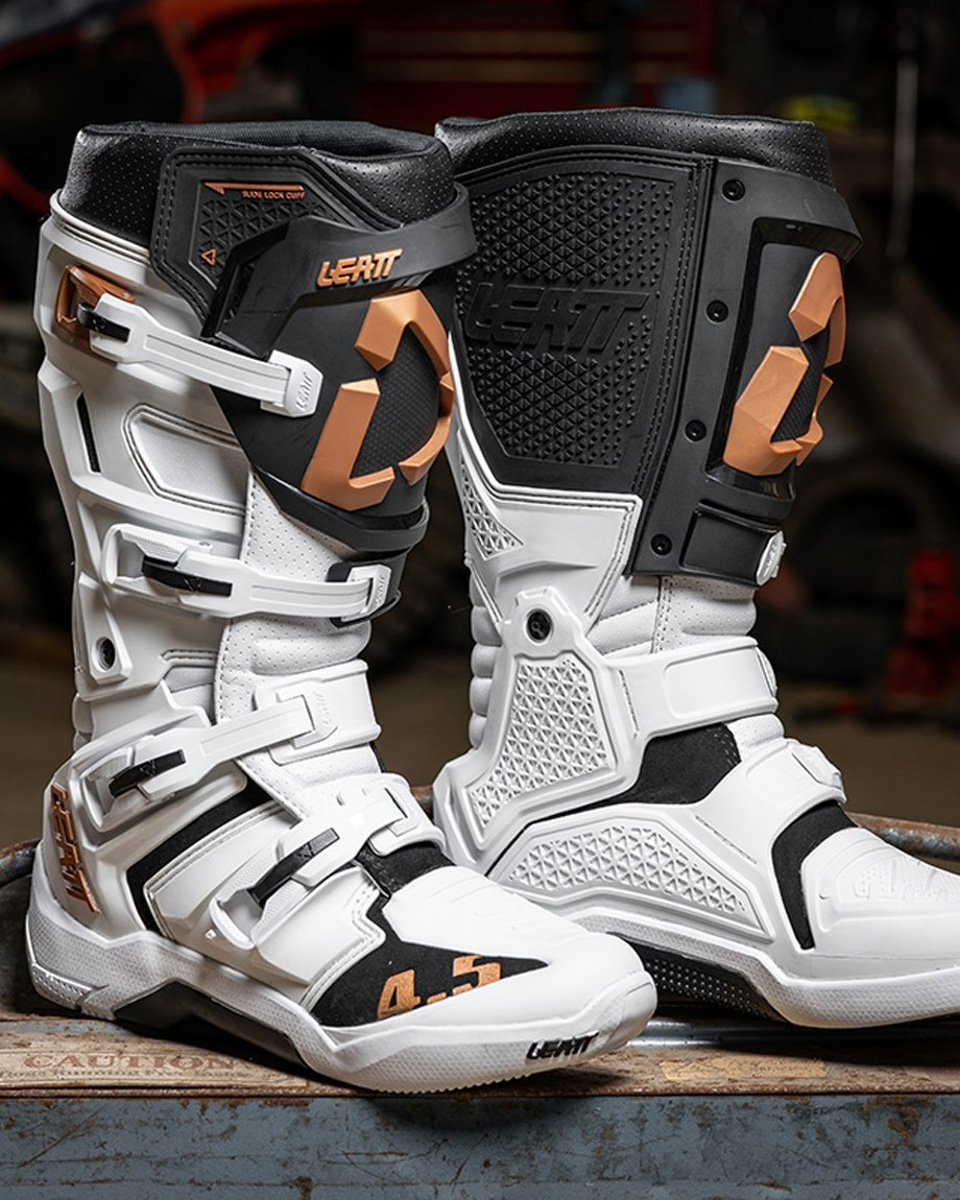
MX boots protect riders with the following features:
The thick leather construction and plastic shielding guards against simple cuts, abrasions and foreign objects from entering the lower leg. Plastic panelling, a thick rubber sole and a sturdy toe protector (either external steel cap or internal injection moulding) protect against blunt force trauma and possible amputations. Panel design, adjustable buckles, plastic supports and sometimes internal booties (high-end models) are used to support the ankle joint and protect it from injury.
Five reasons shoes or work boots won't protect you on a dirt bike:
This should be a no brainer, but unfortunately, there are weekend warriors Australia wide still burning around in their work boots, which is just asking for an injury to happen.
1. Shoelaces and front sprockets do not mix: When your front sprocket and chain decides to snack on your shoelaces you are going to hit the dirt.
2. Shoes come off: the 3-4 sturdy buckles you see on almost every pair of motocross boots are to keep them firmly attached to your body. If you can’t kick an empty coke bottle without sending a shoe into outer space, you can be guaranteed it’s not staying attached during a decent bike cartwheel.
3. No toe protection: Crushing injuries are quite common on dirt bikes. Rocks, logs, and tree stumps, they’re all foot-peg magnets. If your foot happens to get between them and your shoes are going to do a whole lot of nothing.
4. Leather is not enough: Motorbike boots use injection moulded plastic re-enforcing to help stop sharp objects from piercing your lower extremities. The thin leather and soft flexible sole on most shoes is quite easily penetrable by even a small flying stick.
5. Zero ankle support: Shoes were built to protect the foot, not to support the ankle. With almost zero ankle stabilisation a pair of shoes leaves your ankle joint vulnerable to serious injury including sprains, dislocations, and fractures - or all three at once, we have seen it done!
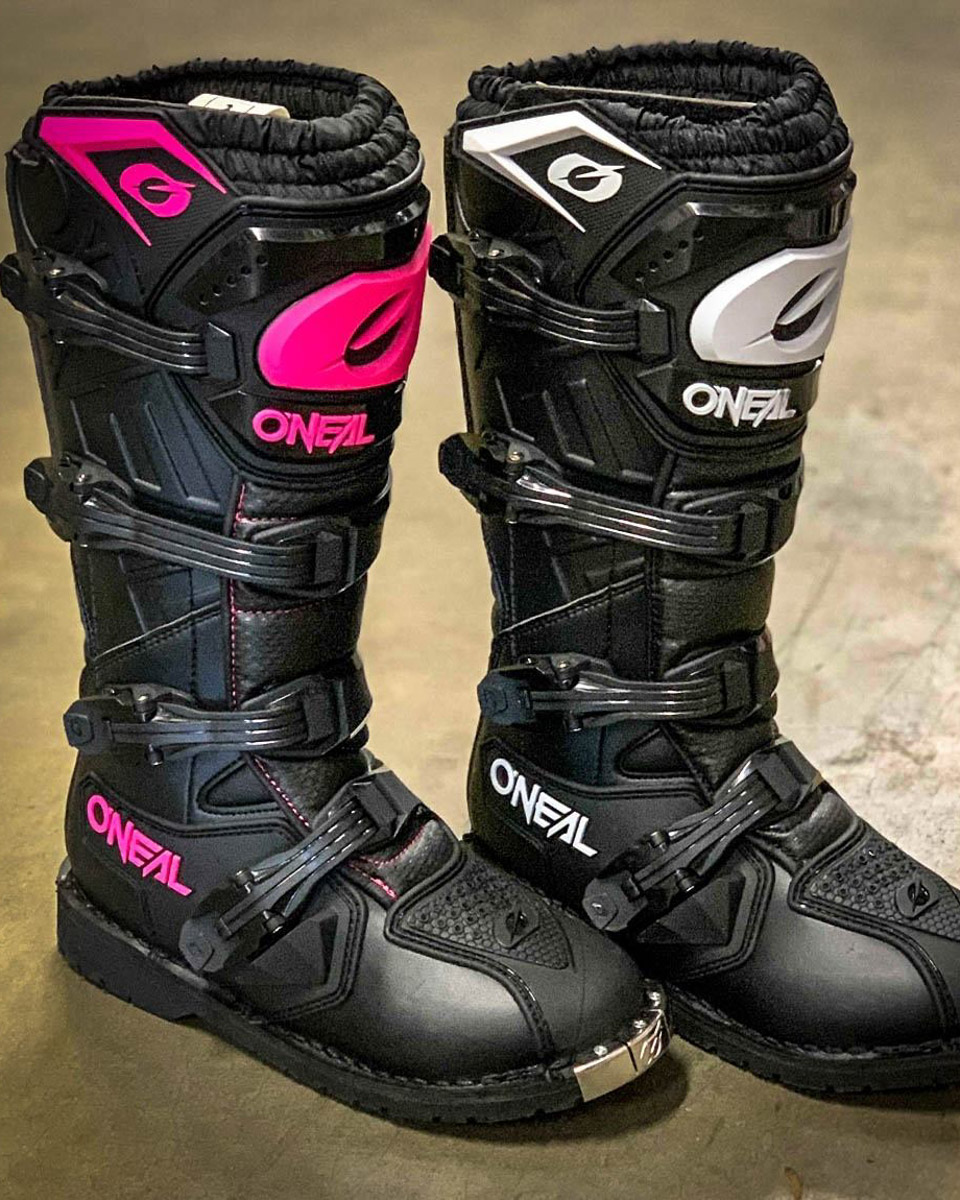
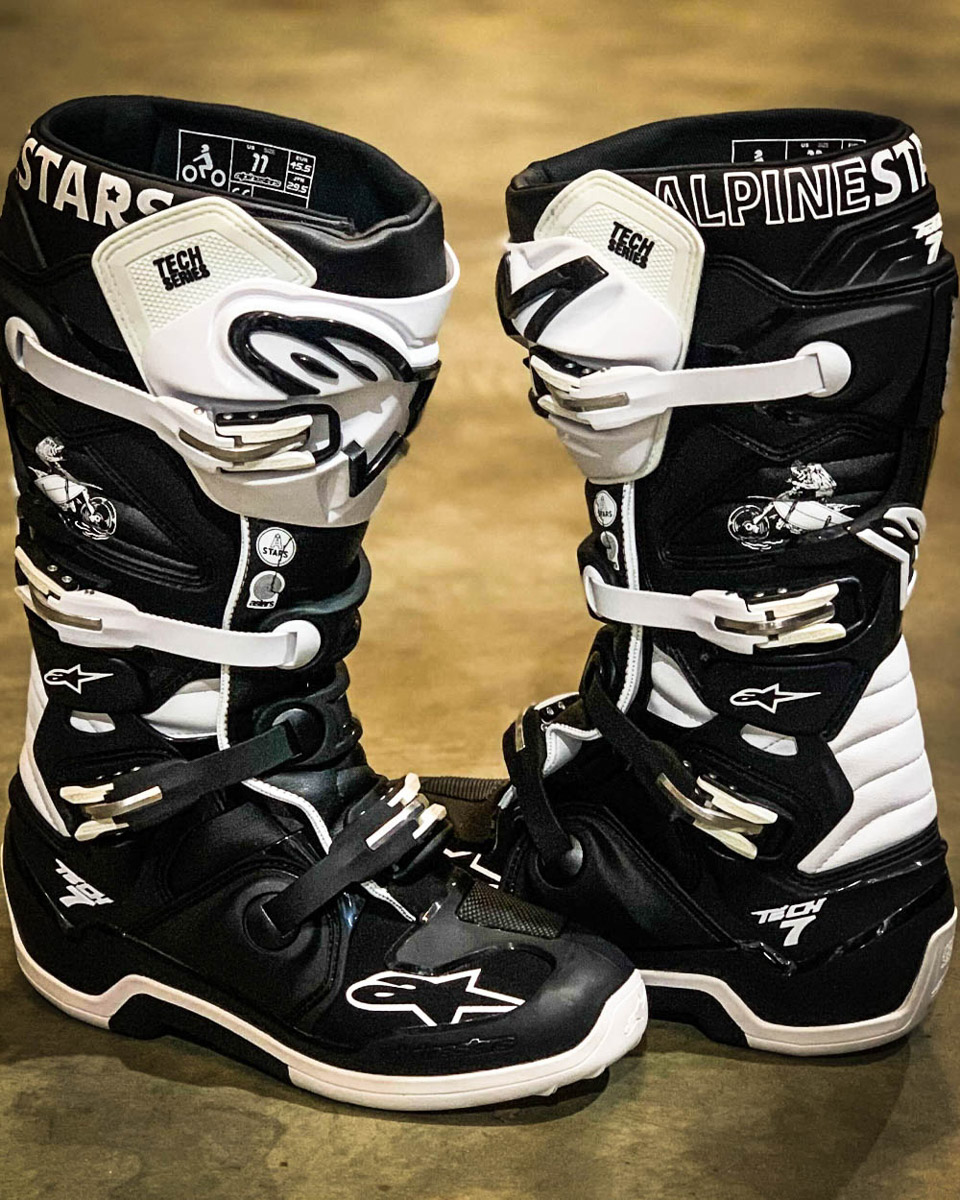
Are motocross boots difficult to get used to and ride in?
If you have never worn a pair before, they will feel a little odd when you first put them on. Remember they are not designed to fit like a shoe - you don’t go shopping for a helmet and expect it to fit like a hat! Dirt bike boots have a very specific job to do, designed by professionals with years of research and development. They will probably feel tight, some-what restrictive and not super easy to walk-in.
Boots are tight for a reason, as they're designed to protect your ankle joint from damage the boots need to encase your leg like a cast. Boots are also hard to walk in for a reason - humans walk with, among other things, flexion and extension of the ankle. Extreme movements (hyperflexion and hyperextension) in either of these directions can be very damaging to the ankle and even micro-tears in the joint ligaments can be very painful and take weeks to repair.
Boots protect you from this kind of damage by limiting the range of movement available to your ankle joint. This can make boots hard to walk in. But remember, once on the bike, you’re not walking anywhere! Most new riders will get used to the feeling of boots in one decent ride, some may take a little longer. All will agree though that they become something you cannot ride without.
High-end models make use of clever hinge systems to protect the ankle from these sorts of hyper-flexion and hyper-extension injuries while still allowing enough movement for easier walking and gear-changes, and rear brake control.
When should I replace my dirt bike boots?
While a lot of us want to get the most out of our boots, there are four key signs that indicate it’s time to upgrade and replace them.
1. Worn out soles:
Worn-out boot rubber soles are the most obvious and common way to gauge if your boots need replacing. Generally, a worn-out boot sole will reach past the first layer of rubber, and there will be an obvious hole where you usually stand on the pegs. There is a selection of boot brands who offer replacement soles for their range such as Sidi, Gaerne and Alpinestars, which is an affordable way to breathe new life into your boots and extend their life.
2. External damage:
Now external damage is a pretty obvious one when it comes to identifying if your boots need replacing, but it can also be something that creeps up on you. Holes can start to wear through on the inside of the boots, while dirt, debris, and even a crash could potentially cause damage to different parts of the boot. It’s always best to inspect your boots after cleaning them to check for any damage that could have occurred while out riding. Checking the condition of the inner insole bootie, buckle system, heat shield, toe box, shin plate, and hinge system are also parts that show signs of aging and wear and tear. Even many road boots with alloy buckles have replaceable soles and parts to keep them in good condition.
3. Discolouration:
If your boots are looking worse for wear and are quite discoloured, especially the leather component of your boot, then it’s time to replace them. The discolouration is a strong indicator that the materials of your boots have been weakened, and that could prevent them from providing the protection they once offered. Discolouration can come as a result of poor cleaning, although it’s usually a result of a pair of boots that have been well used.
4. Poor fitment:
You may also find your MX boots don’t have a nice and firm fit, which can also include signs of any of the above points. Dirt Bike boots are designed to be a snug fit to offer you maximum protection, so if you find your feet and ankle moving around inside your boots (even after tightening the buckles), it could be an indicator that’s time for a fresh set.
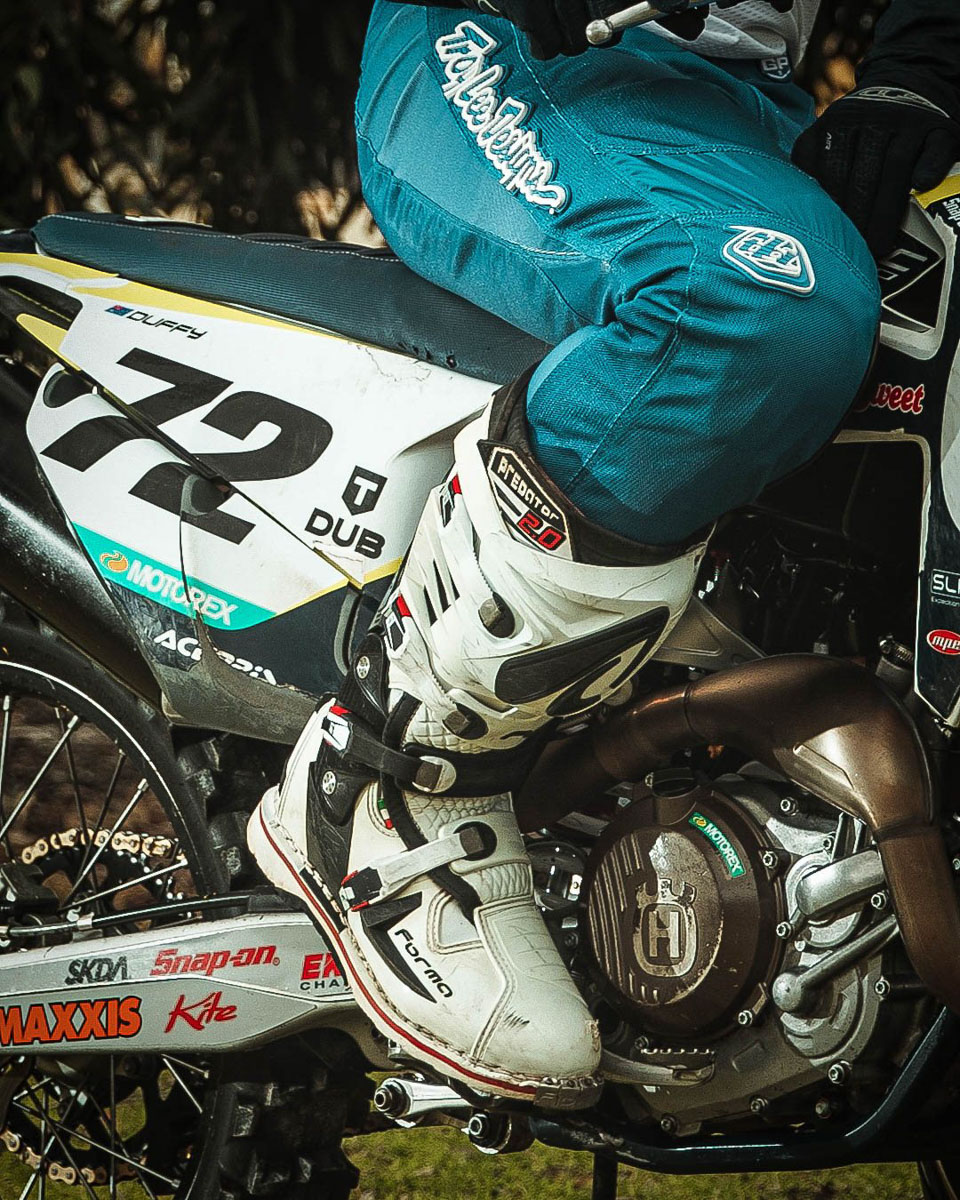
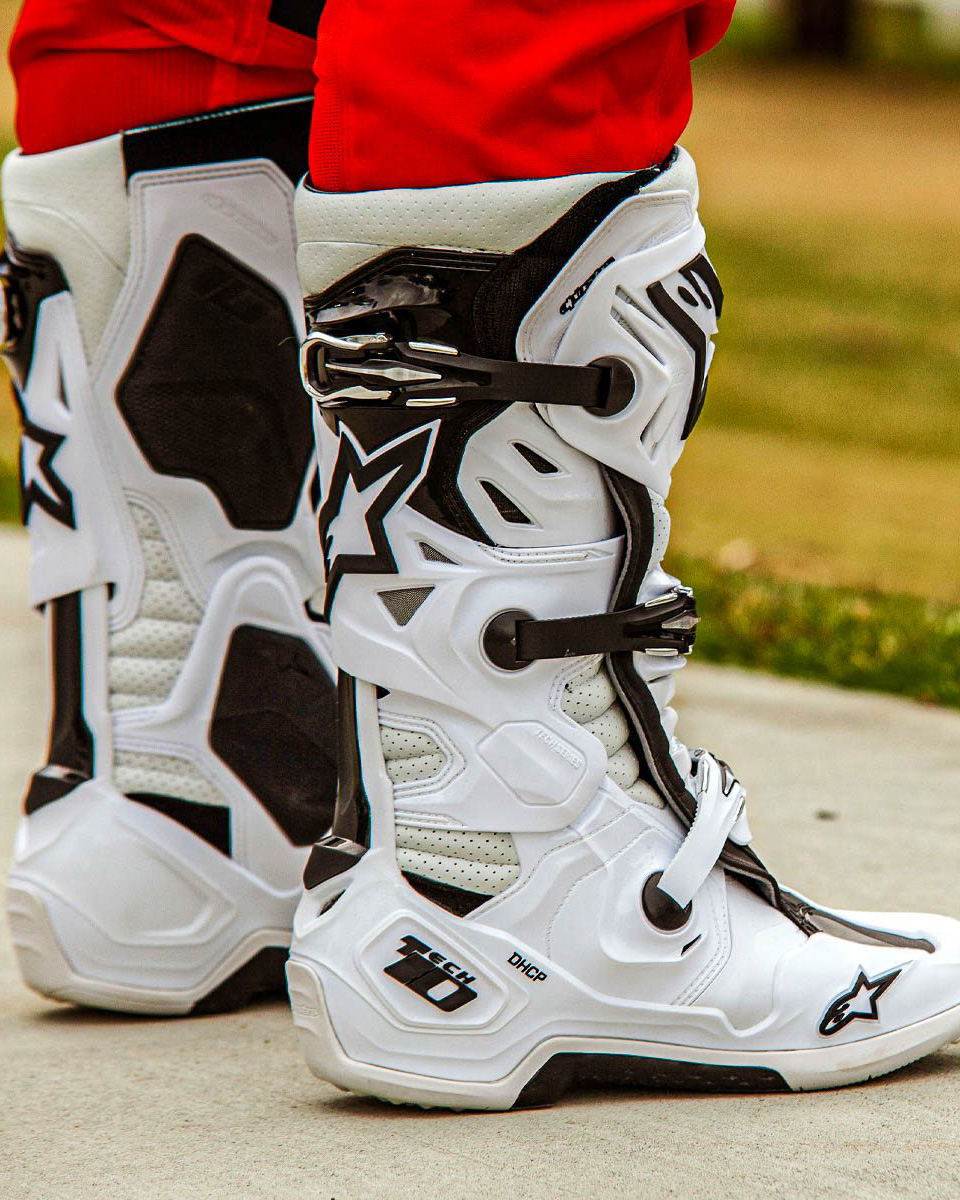
What dirt bike boots should I buy?
When it comes to buying dirt bike boots for motocross, enduro and trail riding, there are two things to consider: Budget and protection. Any type of motocross boot is going to offer far more protection than shoes or work boots, however an entry-level boot isn't going to offer the same level of protection and support compared to a premium boot. Entry-level boots are recommended for beginner moto riders - riders who are learning the ropes and taking things easy. While entry-level boots are cost-effective, they generally lack feel, support and advanced protective features.
Entry-level moto boots include models such as Oneal Rider, Fly Racing Maverik, Thor Blitz, and Fox Racing Comp boots.
If you're a level above a beginner or riding competitively, then we recommend choosing a mid-range to premium boot. This sector of motocross and enduro boots are made from higher-quality materials, have an exceptional feel, and they generally boast an advanced protection and support system to prevent impact, bone and ligament injuries.
Premium dirt bike boot models include Alpinestars Tech 10 boots, Gaerne SG-12 boots, Sidi Crossfire 3 SRS boots, Fox Instinct boots, and Forma Predator boots.
You can learn more on which dirt bike boots to buy in our Buyer's Guide: The MXstore Boots Buying Guide
How do I look after my dirt bike boots?
Motocross riding boots are made from strong, yet sensitive materials, meaning it's incredibly important to look after them so they not only continue to protect you, but so they also remain durable and provide you value for money. We recommend washing your boots as soon as possible after every day of riding, as leaving them dirty can damage the leather and plastic, while also discolouring them (especially white boots!), plus the buckles can become corroded. Washing your dirt bike riding boots is simply a case of using a soaping them, scrubbing them, followed by rinsing and allowing them to dry. It's also recommended to store your boots in a gear bag or boot bag while travelling to and from the track or trail to ensure they don't get damaged along the way. We go in-depth on how to care for your motocross boots in this guide: How To Care and Clean Dirt Bike Boots
.jpeg)
.jpg)
Dirt bike boots tips:
Clean boots after every ride: One of the first things to prolonging the life of your dirt bike boots is to clean them after every day of riding. Many motocross or enduro riders can get lazy and wash their boots days after riding, or sometimes not at all, but this can deteriorate the materials much more quickly - the leather of the boots can start to breakdown, and the buckles will tighten and seize up. It's also important to properly dry your motocross boots.
Sharp pegs enhance wear & tear: While the wear and tear of the structure of the boot is one reason MX riders would want to replace their off-road boots, the wear on the sole is the main reason that boots need to be retired. Wear on the bottom of the sole depends on a couple of things, such as foot position and how you ride. Some riders barely make a mark on the sole, while others tear through them. There's also one more thing that plays a factor - sharp footpegs. If you have sharp footpegs, there's a good chance you'll chew through the sole of your dirt bike boots - so keep that in mind. On the plus, sharp pegs provide incredible amounts of grip, which can boost your control and technique of the bike.
Use a boot wash stand: If you've ever tried washing your dirt bike, then you know how frustrating it trying to wash a pair of boots on the ground, where you need to keep flipping them over or the pressure cleaner keeps blowing them away. That's where a boot wash stand comes in, allowing you to wash the boot from every angle without having to constantly move them around, making for a thorough and efficient clean.
Use an air compressor: If you have an air compressor handy, we recommend using it to blow off any excess water on your boots after washing them. Pay particular attention to the buckles, as blowing out water will prevent them from corroding and seizing.
Store in a boot bag: Storing your boots in a boot bag means keeping your dirt bike gear bag clean, along with keeping the stench of sweaty feet out of it. A dirt bike boot bag is also great to keep your boots protected from unnecessary damage while in transit.
What to learn more about dirt bike boots?
How To Clean and Care for Dirt Bike Boots
The MXstore Boots Buying Guide
Entry-Level Dirt Bike Boots Comparison














